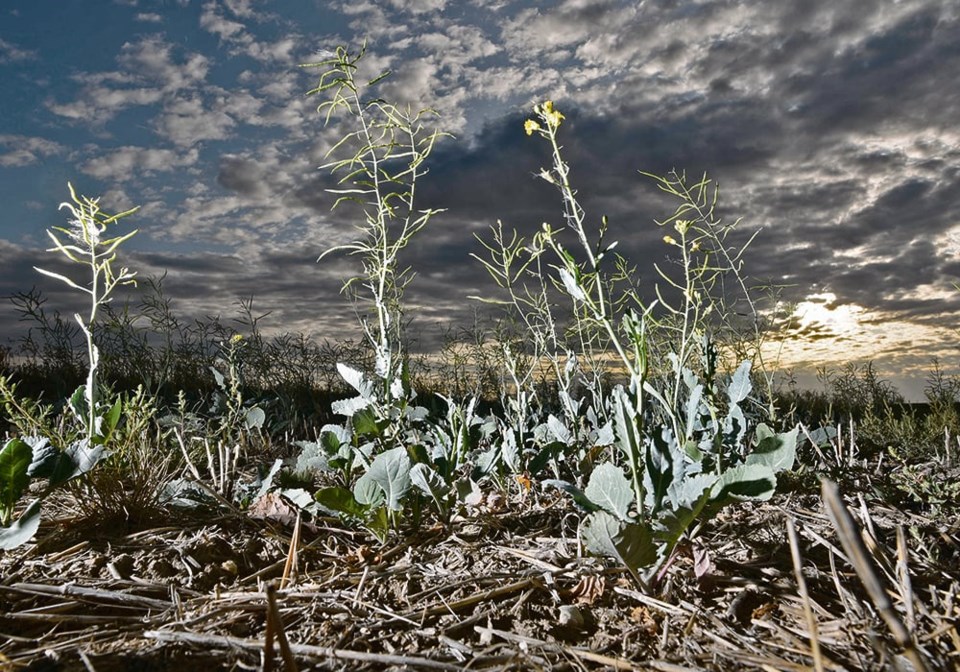WESTERN PRODUCER — The weather cycle that brought drought to the Prairies during the past few years will slowly change for the better, a meteorologist predicts.
However, Drew Lerner, president and senior agricultural meteorologist at World Weather, Inc., says there could be challenges ahead for producers.
This year could be better for some farmers and ranchers due to rain in their areas, while others will struggle, he told last week’s CrossRoads Crop Conference in Calgary.
Lerner said he expects it will take until 2025 for most of the Prairies to enjoy improved precipitation.
“And the good news is we are coming to the end of it, so there is hope for a change. The problem we’re going to have today is trying to sort out exactly when the change will be complete.”
Lerner spoke Jan. 31, the same day the Alberta government announced that below-average snowpacks and record-low river levels had prompted officials to launch the largest initiative of its kind in the province’s history.
The Drought Command Team was authorized for the first time since 2001 to begin negotiations for water-sharing agreements with major water licence holders in the Bow, Oldman and Red Deer river basins. The goal is to reduce water use to help others downstream if a severe drought occurs, said a provincial statement.
It said Alberta has 51 water shortage advisories with the most recent federal assessment stating 70 percent of Canada, and 81 percent of the country’s agricultural landscape, is abnormally dry or in moderate to exceptional drought.
Lerner said the situation is not good for snowpack in the Rocky Mountains, which he described as varied but well below normal in many areas. It is the source of much of the Saskatchewan River system that supplies water for irrigation and communities across the Prairies.
“I think that there’s potential that when we get into the late winter or early spring, we can generate a little bit more snowfall … but fully restoring back to where it should be, I don’t think so, so that water supply is going to still be restricted and we want to be really careful to conserve (it).”
However, Lerner predicted in an interview that dry conditions this year on the Prairies generally won’t be as bad as the past few years, although it will likely start off looking just as bad in some areas.
“It’s not going to be ideal … but I think the bottom line is that we aren’t going to be so bad off that we can’t be farmers in 2024,” he said.
“I think that we’ll be able to do it. These guys are amazing, what they can do with what little they get, and I think we’ll get a little more than what little they can get, so I think it’ll be possible.”
He said long-term moisture deficits will likely continue in the southwestern Prairies this spring.
“So, east-central and southern Alberta are going to be dry. We aren’t going to be as absolutely dry as we have been as we move forward in time. I think there’s an opportunity for precipitation to come and go.”
It likely won’t be large enough to fix the moisture deficit, which means producers will probably face a frustrating situation, said Lerner.
“But we might make enough moisture that we can plant and then worry a lot as we wait for better rains to come and support the crop, and that’s kind of my visualization for the spring in that part of the Prairies,” he said.
“And I don’t know what else to say except for it’s really going to come down to getting lucky. We saw a little bit of that last year. There’ll be a storm come in, two people will get rain and the others would not, and stuff like that, but it will not be uniform rains or snow, and we’ll still have a challenge. But once we get into the summer months, I think the rain will be a little more routine and we’ll do better, so it’ll be a better scenario. I just think that spring is going to be a challenge.”
The first cutting of hay may be hard to come by, “but it’ll get there, so it might be an expensive start for the year for some of those folks, but I do think it will change.”
The rest of the Prairies will probably have more opportunities for precipitation starting early this year, said Lerner.
“We’ll see a little bit of that in February, more of that in March and a better period in April, most likely, but then as we get into late spring and summer, we’re going to turn things around.”
He expects an eventual ridge of high pressure in the eastern Prairies could boost rain in the western Prairies. He said northwestern Saskatchewan as well as northern and east-central Alberta will likely have wetter weather by the summer.
“But in southern Alberta, we’re so dry, and southwestern Saskatchewan, those areas, they’ll get more moisture in the summer than they’ve had, but probably not enough to fix the (moisture) deficits in a big way.”
Lerner said the ridge of high pressure will likely dry out Manitoba and southeastern Saskatchewan. Meanwhile, the Peace Country in northwestern Alberta will probably experience drier conditions as the year progresses, “not necessarily just terrible drought, but they’re going to struggle for moisture more than not.”




